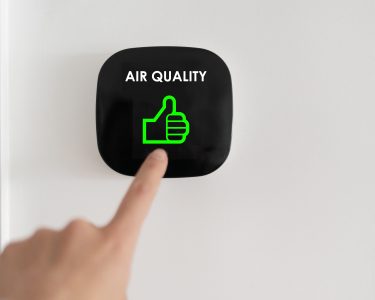Buying a home is one of the most significant investments most people will make in their lifetime. To ensure that the investment is sound, a thorough home inspection is crucial. While a home might look perfect on the surface, hidden issues can turn a dream home into a money pit. Here, we’ll delve into common home inspection red flags and offer guidance on how to address them.
Foundation Problems: One of the most alarming issues that can arise during a home inspection is foundation problems. Cracks in the foundation or uneven floors can be indicative of serious structural issues. Over time, environmental factors like soil erosion, water damage, or even tree roots can compromise the foundation’s integrity. Addressing this red flag is paramount. How to fix a cracked foundation often involves a multi-step process. Hiring a structural engineer to assess the damage is the first step. Depending on the severity, solutions might range from sealing smaller cracks with epoxy to more extensive underpinning for major issues. It’s essential to address foundation problems promptly, as they can lead to more significant structural issues if left unchecked.
Roof Problems: The roof is a home’s primary defense against the elements, and any issues with it can lead to a host of other problems, from water damage to mold growth. Missing shingles, leaks, or a sagging roofline are all red flags. While minor issues might be patched up, significant damage might require a more comprehensive approach. Understanding how to replace a leaky roof is crucial. This involves hiring a roofing professional to remove the old roof, assess any underlying damage, and install a new, durable roof that can withstand the elements.
Mold Problems: Mold is not just unsightly; it can also pose health risks. Dark spots on walls or ceilings and a musty odor are telltale signs. Mold often arises from persistent moisture, be it from leaks, poor ventilation, or flooding. Addressing the root cause is the first step in how to remove mold from a home. Once the moisture source is identified and fixed, a mold remediation specialist should be hired to clean and treat the affected areas, ensuring the mold doesn’t return.
Electrical Problems: With the increasing reliance on electronic devices, a home’s electrical system’s efficiency and safety have never been more critical. Flickering lights, old fuse boxes, or exposed wires are all indicators of potential electrical issues. How to update old wiring is a task that should be left to professionals. A licensed electrician can replace outdated systems, ensuring the home meets current safety standards and can handle modern electrical loads.
Plumbing Problems: Plumbing issues can range from minor annoyances to major headaches. Low water pressure, rusty water, or recurrent clogs can all indicate underlying problems. Old homes, in particular, might have galvanized pipes, which are prone to corrosion and rust. Understanding how to repair galvanized pipes is essential. Modern PVC or copper pipes are more durable and efficient, and a plumber can replace old pipes to ensure a smooth and clean water flow.
HVAC Problems: A functional HVAC system is crucial for comfort. Inconsistent temperatures or an aging system can lead to increased energy bills and reduced comfort. How to install a new HVAC system is a significant undertaking. An HVAC professional can evaluate the home’s needs, considering factors like size, insulation, and climate, to install an efficient system tailored to its requirements.
Termite Damage: Termites are small but mighty foes. These pests can cause extensive damage if left unchecked. Hollow-sounding wood or visible mud tubes on walls are signs of an infestation. Addressing termite damage involves a two-pronged approach. First, a pest control expert should be hired to eliminate the infestation. Once the termites are gone, the next step is to repair or replace the damaged wood to restore the home’s structural integrity.
Water Damage: Water is life, but it can also be a source of destruction. Stains on ceilings or walls, peeling paint, or a damp basement can all indicate water damage. The key to how to fix water damage lies in identifying the source, be it a leaky roof, faulty plumbing, or poor drainage. Once the source is rectified, damaged materials should be replaced, and the area should be dried thoroughly to prevent mold growth.
Structural Damage: Beyond the foundation, other structural elements like joists, beams, and walls can also suffer damage. Cracks in walls, misaligned windows, or doors that won’t close properly can all indicate structural issues. How to repair structural damage can be complex, often requiring a combination of fixes. A structural engineer can provide guidance, ensuring the home remains safe and sound.
In the realm of home buying, knowledge is power. Being aware of potential red flags and understanding how to address them can make the difference between a wise investment and a costly mistake. With the right insights and experts by your side, you can navigate the intricacies of home inspections with confidence, ensuring your new home is everything you dreamed of and more.
Home Inspection Tips and Costs
Navigating the world of home inspections can be a daunting task, especially for first-time homebuyers. However, with the right approach and information, it can be a smooth and enlightening process. One of the first things to understand is the importance of a thorough home inspection. It’s not just a formality; it’s a crucial step that can reveal potential problems and save you from costly repairs down the line.
When considering a home inspection, it’s essential to do your research. Not all home inspectors are created equal. Look for an inspector with a solid reputation, proper credentials, and positive reviews. Word of mouth can be a valuable resource here, so consider asking friends or family for recommendations. Additionally, many professional organizations, like the American Society of Home Inspectors (ASHI), have stringent standards and can be a good starting point for finding a qualified inspector.
Once you’ve selected a home inspector, communication is key. Don’t hesitate to ask questions before, during, and after the inspection. A good inspector will be willing to explain their findings, offer insights, and provide guidance on potential repairs. Remember, the goal is not just to identify problems but to understand their implications and potential solutions.
Equally important is the home inspection checklist. This comprehensive list ensures that all critical areas of the home are reviewed, from the foundation to the roof and everything in between. While the inspector will have their checklist, it’s a good idea for buyers to be familiar with it as well. This way, you can ensure that no stone is left unturned and that you’re getting the most out of the inspection.
Now, let’s talk about home inspection cost. While prices can vary based on factors like the home’s size, age, and location, on average, home inspections range from $300 to $500. While this might seem like a significant expense, especially amidst the other costs associated with buying a home, it’s a worthy investment. Consider the potential cost of missed problems, from structural issues to outdated systems. The peace of mind and potential savings a thorough inspection can provide far outweigh the initial outlay.
Lastly, it’s essential to approach the home inspection with an open mind. No home is perfect, and even new constructions can have issues. The goal is not to find a flawless house but to understand the home’s condition, warts and all. This knowledge empowers buyers to make informed decisions, whether that’s negotiating repairs with the seller, adjusting the offer price, or even walking away from a deal that doesn’t make sense.





